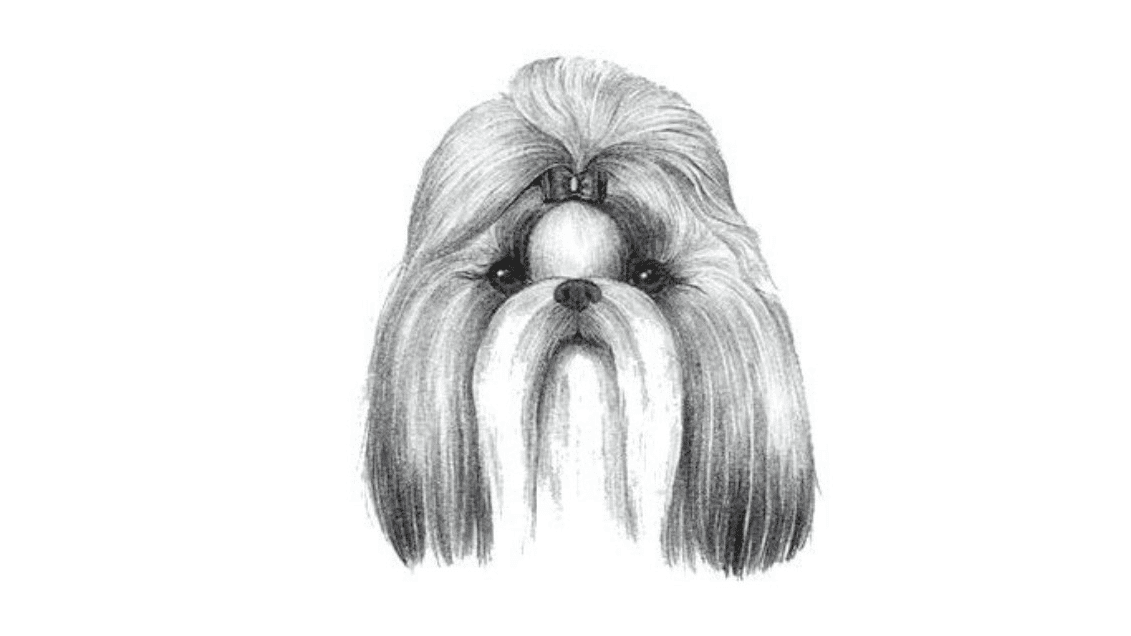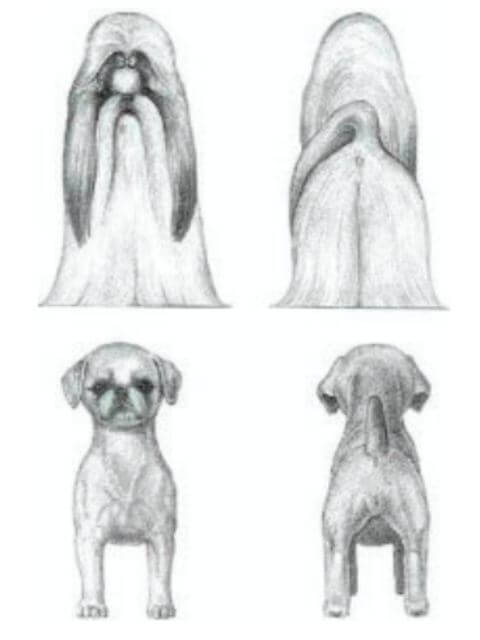


Home » Judging the Shih Tzu

This article was originally published in Showsight Magazine, September 2015 issue.
Shih Tzu were recognized by the American Kennel Club 45 years ago, but there is a fairly short list of breeder/judges. That fact, I believe, places extra responsibility on judges who have come from other breeds/groups to judge Shih Tzu. When selecting judges for National or Regional specialties, exhibitors are looking for judges who have proven to understand the nuances of the breed and any concerns about current problems that may be evident in the show ring. We want judges of Shih Tzu to be knowledgeable and comfortable when judging these toy dogs. It is important to use parent club material about the breed. I urge new and experienced judges of Shih Tzu to include in their preparation The Illustrated Guide to the Shih Tzu Standard published by the American Shih Tzu Club.
This attractive 64-page booklet contains the standard with clarifications. These are accompanied by wonderful drawings by Stephen Hubbell to help understand what is under the glamorous looking coat on dogs in the show ring. To further that understanding, there are also colored photos of Shih Tzu in full show coat and then ‘cut down’. The accompanying honest evaluations of the good and less desirable features of these dogs is invaluable to anyone learning or judging the breed. Before any assignment to judge Shih Tzu, it is worthwhile to take this booklet off of the shelf and review what the parent club is telling you about the breed. If it is not in your personal library, review it online at https://www.shihtzu.org/. I also recommend that Shih Tzu exhibitors and breeders review this information regularly. It contains more specifics than this article, which is a condensed review of breed characteristics.
The Shih Tzu should be a rectangular dog, with “length between the withers and root of tail slightly longer than height at withers.” It is not a square dog and must never be so high stationed to appear leggy, nor so low stationed as to appear dumpy or squatty. Color patterns may be deceptive—a solid-colored dog will look longer than a dog that has a wide white ‘shawl’ over the shoulders. The amount and quality of hair may also vary the perception of the proportion of the dog moving around the ring. Train your eye to these variances—and then use your hands to confirm the proportion of the dog during the table examination.
The only way to determine whether the dog fits the written standard is to use your hands to discover what is under the “long and flowing” coat. The first impression when approaching the dog is the head and expression. Expression is described in the Standard as “Warm, sweet, wide-eyed, friendly and trusting… Care should be taken to look and examine well beyond the hair to determine if what is seen is the actual head and expression rather than an image created by grooming.” Round is the descriptive word to remember as you examine the head; it should be broad and rounded from side to side as well as from stop to occiput. The head should be in balance with the overall size of the dog. The muzzle is square, short, well-cushioned, set no lower than the bottom eye rim, and ideally no longer than one inch from tip of nose to stop.
Front of the muzzle is flat; lower lip and chin should not protrude and definitely never recede. The bite is overshot. Nostrils should be broad, wide, and open, and the jaw should be broad and wide. Ears are large and set slightly below the crown of the skull. Round is also the word to remember when examining the eyes, which should be “large, round, not prominent, placed well apart… very dark.” The correct eyes are vital to the warm, sweet, friendly expression that is a part of the essence of the breed.
There may be a ‘bubble’ of hair over the forehead; it is your job to use your thumbs and forefingers to learn whether the head is rounded, or whether the bubble is obscuring the fact that the dog does not have enough stop. There may be a towering topknot, but you should put your fingers through it at the base to determine the shape and size of the head. We are losing the nice big head that should be a hallmark of the breed (narrow heads are a fault), so judges are urged to reward the proper heads when possible. The topknot should help to frame the face and enhance the expression. Higher is not better! In fact, the too-tall topknot can actually distort the expression as well as the moving profile. While there should be enough length of neck to “permit natural head carriage…in balance with the height and length of the dog,” the Shih Tzu standard also asks for an “overall well-balanced dog with no exaggerated features.” After examining the head, it is time to further examine the body.

Hopefully, you will find straight front legs, tight elbows, broad and deep chest, good spring of ribs, well-angulated shoulders, level topline, flat croup, and a tail that is set on high, heavily plumed, and carried in a curve over the back. It is very important to remember that the Shih Tzu should not have a ‘waist’—there should be little tuck-up. There are exhibitors who don’t seem to understand how to set their Shih Tzu up on the examination table. And, there are good handlers who are able to create a level topline when the dog is on the exam table but—for both—the true test is to watch the dog moving and then make final placement decisions based on structure, movement, and carriage. Judges need to be patient and examine all dogs equally.
Tails should be “set on high, heavily plumed, carried in a curve well over the back. Too loose, too tight, too flat, or too low set a tail… should be penalized to the extent of the deviation.” There are many Shih Tzu with a sloping croup and a resulting low tail set; these affect the topline and the overall balance of the dog. There are also increasing numbers of Shih Tzu with ‘flat’ tails, where the tail is almost lying on the back of the dog. Even though the flat tail is more subtle than the low-set tail, it is also improper.
We are seeing Shih Tzu that are successful in the ring and might look ‘glamorous’ moving around the ring, but they are too short in body. Eyes, as noted earlier, breeders need to pay attention to size, shape, color, and placement of eyes to protect the proper expression.
Shih Tzu are in the Toy Group, and have a range of weights (9 to 16 pounds) and heights (9″ to 10½” but not less than 8″ nor more than 11″). Regardless of size, the Shih Tzu is always compact, solid, and carries good weight and substance. Exhibitors complain that many judges seem to think that smaller is preferred—not true! As long as the Shih Tzu is within the weight and height range, each must be judged equally against the written Standard of the breed and not by any ‘cute factor’ that might be seen in smaller dogs. Please visit the American Shih Tzu Club’s website to view the Illustrated Guide to the Shih Tzu and other articles about Shih Tzu.